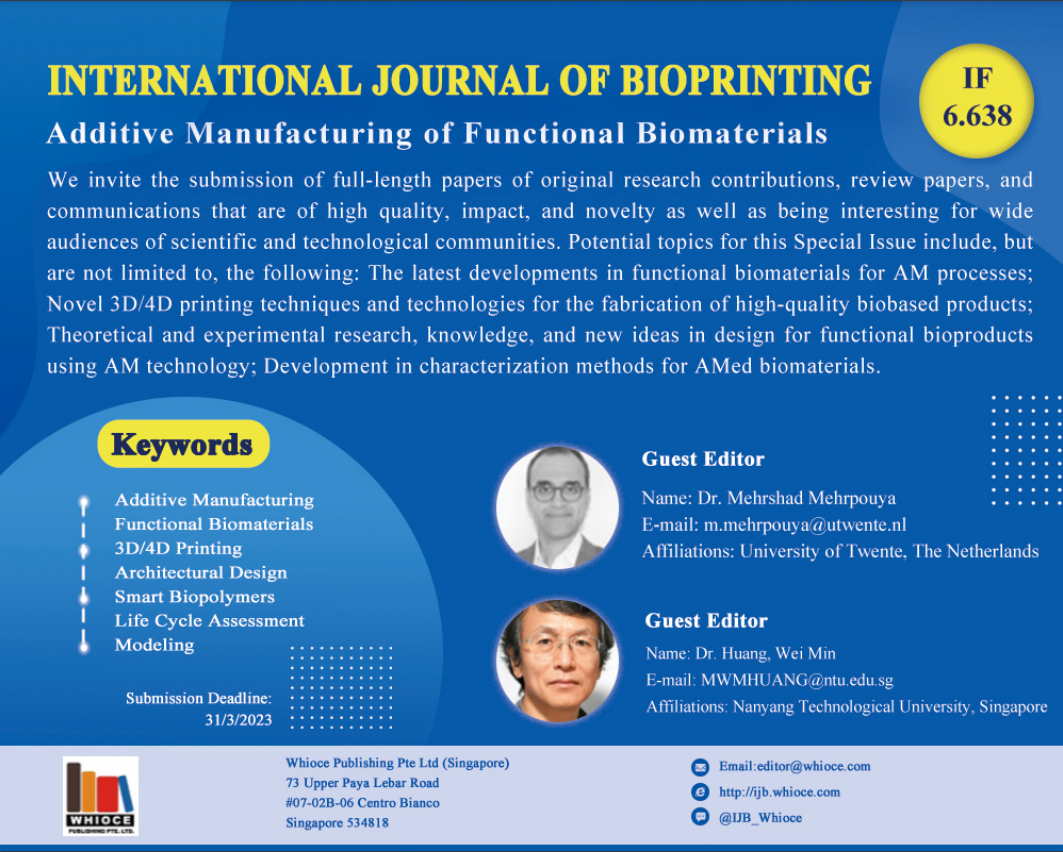
Dear Colleagues
Additive manufacturing (AM) of biomaterials has been developing rapidly in the last two decades. This is due to many benefits in both fabrication techniques, which give unique freedom in customization, and bio-based materials for developing green and sustainable products. Biomaterials currently have a wide range of applications in biomedical engineering, bioimplants, biosensors, packaging industry, etc. The application of functional biomaterials can provide a unique capability to fabricate active products that can transform from one state/shape to another. Therefore, this smart behavior can be applied in the design and manufacturing of products with intended functionalities.
We invite the submission of full-length papers of original research contributions, review papers, and communications that are of high quality, impact, and novelty as well as being interesting for wide audiences of scientific and technological communities. Potential topics for this Special Issue include, but are not limited to, the following:
-
The latest developments in functional biomaterials for AM processes;
-
Novel 3D/4D printing techniques and technologies for the fabrication of high-quality biobased products;
-
Theoretical and experimental research, knowledge, and new ideas in design for functional bioproducts using AM technology;
-
Mathematical modeling or numerical simulation to predict/optimize the functionality of AMed biomaterials;
-
Development in characterization methods for AMed biomaterials.
3D printing of drug-eluting bioactive multifunctional coatings for orthopedic applications
The biological properties of 3D-printed degradable magnesium alloy WE43 porous scaffolds via the oxidative heat strategy
Preparation and Characterization of 3D Printed Porous 45S5 Bioglass Bioceramic for Bone Tissue Engineering Application
Design and biomechanical analysis of patient-specific porous tantalum prostheses for knee joint revision surgery
Enzymatic post-crosslinking of printed hydrogels of methacrylated gelatin and tyramine-conjugated 8-arm poly(ethylene glycol) to prepare interpenetrating 3D network structures
DLP-printed GelMA-PMAA scaffold for bone regeneration through endochondral ossification
Micron track chitosan conduit fabricated by 3D-printed model topography provides bionic microenvironment for peripheral nerve regeneration
3D printing of PCL-ceramic composite scaffolds for bone tissue engineering applications



